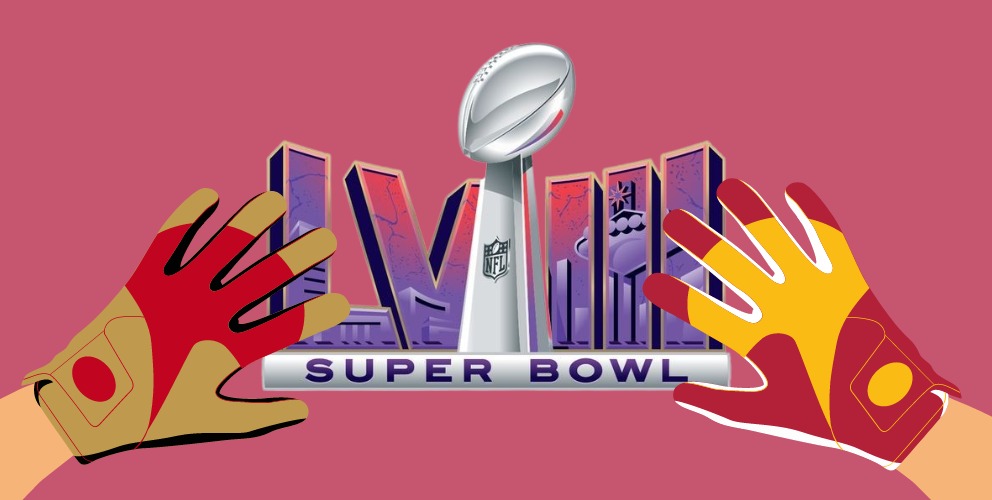Product Launch Tips with Super Bowl Commercials


Each year, enthusiasts of American football eagerly anticipate a cultural phenomenon: the Super Bowl. Held annually on the second Sunday of February since 2022, this event marks the culmination of the football season, which kicks off in September following the NFL preseason. The Super Bowl is often dissected through three primary lenses: the triumph claimed by the victor, the buzz surrounding the latest halftime spectacle, and the commercials that have morphed into a spectacle of their own over time. These advertisements have transcended their initial purpose as marketing tools, integrating themselves seamlessly into the fabric of the Super Bowl experience. This piece delves into the evolution of Super Bowl commercials, tracing their origins from modest beginnings to the extravagant, celebrity-filled productions they have become today.
Origins of Super Bowl Advertising:
In January 1967, the inaugural Super Bowl, originally dubbed the AFL-NFL World Championship Game, marked its debut. According to Fox Business, the price for a 30-second commercial slot hovered around $42,000 at that time. Prior to gaining widespread popularity, Super Bowl commercials did not garner the public attention they do today. Time Magazine noted that these advertisements appeared repetitive, lacking the distinctiveness and fanfare they enjoy now.
Early Years and Milestones:
The turning point for Super Bowl commercials to adopt more intricate narratives was marked by the debut of Apple's iconic "1984" advertisement. Released during the Cold War era, Apple tapped into societal anxieties by depicting a "Big Brother" figure reminiscent of George Orwell's dystopian novel, effectively drawing parallels with IBM, as noted by Time Magazine. Despite airing only once, this commercial established a benchmark against which subsequent Super Bowl ads would be measured. Notably, it not only showcased the product but also conveyed a captivating storyline that resonated deeply with viewers. This emotional connection between the audience and the brands became increasingly evident, laying the groundwork for future trends in Super Bowl advertising.
Apple - “1984” - 1984
The Rise of Humor and Creativity:
During the 1990s, Super Bowl commercials embraced a fresh approach: humor. Numerous brands jumped on the bandwagon, producing clever and amusing advertisements aimed at eliciting laughter from viewers. Beyond the action on the football field, a new kind of rivalry emerged among brands, each vying to create the most unforgettable and buzzworthy commercial. This shift towards comedic advertisements gave rise to iconic spots like the 1992 collaboration featuring Michael Jordan and Bugs Bunny (four years prior to the release of Space Jam) and Cindy Crawford's Pepsi ad, as reported by the New York Post.
Nike - "Bugs Bunny and Michael Jordan" - 1992
Pepsi - “Cindy Crawford” - 1992
Shift toward Star Power:
As the new millennium dawned, Super Bowl commercials underwent another evolution: the integration of celebrities. Companies started pouring significant resources into securing well-known personalities for their advertisements, recognizing the potential of pairing a beloved star with a carefully crafted narrative to make a lasting impression on viewers. This trend is evident in some of the standout commercials from Super Bowl XVII, such as Heineken's teaser for Marvel's Ant-Man and the Wasp: Quantomania featuring Paul Rudd, and PopCorners, which showcased Breaking Bad stars Bryan Cranston and Aaron Paul, as reported by Forbes.
Heineken - “Now You Can, Before Saving the Day” - 2023
Popcorners - "Breaking Bad” - 2023
Digital Age and Interactive Campaigns:
The emergence of the internet and social media in the 21st century sparked a notable shift in Super Bowl advertising strategies. Similar to movie trailers, brands started utilizing digital channels to launch pre-game teaser campaigns, aiming to generate excitement among audiences in the weeks preceding the main event. According to Time Magazine, these promotions were disseminated across various social media platforms, tapping into a wide audience base. The idea of engaging with the audience and soliciting feedback gained traction, leading to practices like the early release of ads by brands such as Uber Eats and Booking.com for this year's big game, as observed by NBC.
Emotional Storytelling and Social Issues:
In recent times, Super Bowl commercials have transcended their traditional role of providing entertainment and marketing products. Instead, brands are leveraging this platform to address pertinent social issues and share narratives that resonate with the audience. Advertisers now understand the significance of establishing deeper connections with viewers and are using Super Bowl commercials as a vehicle to convey meaningful messages. An exemplary case is the "Like a Girl" campaign by Always in 2015, which aimed to challenge gender stereotypes. According to the Huffington Post, this campaign was ranked as the top advertisement of the 2015 Super Bowl by Adobe, based on its extensive mentions on social media platforms.
Always - “#LikeAGirl” - 2015
The Super Bowl as a Cultural Moment:
Super Bowl commercials have evolved from their primary function of selling products to becoming cultural touchstones that continue to influence conversations long after the game ends. Viewers now eagerly anticipate these commercials as much as the game itself, with Forbes referring to them as an integral part of the "Super Bowl Trifecta." These advertisements are thoroughly analyzed, debated, and widely shared, transforming them into a form of entertainment that extends well beyond the confines of the television screen.
High Stakes of Super Bowl Advertising:
The soaring popularity and cultural relevance of Super Bowl commercials have raised the stakes considerably. From the modest $42,000 price tag at the outset, the cost of a Super Bowl commercial has skyrocketed to $3.5 million today, as reported by Forbes. In response to this substantial financial commitment, advertisers strive to produce memorable and impactful content that validates the expense. These endeavors have proven fruitful for numerous brands, with Budweiser, for instance, achieving a return on investment of approximately 172%, according to Stanford Business.
Cultural Impact Beyond the Game:
Super Bowl commercials wield significant influence over popular culture, leaving indelible impressions on society. Memorable catchphrases, characters, and jingles from these advertisements frequently become deeply ingrained in the collective consciousness. Examples such as the E-Trade Baby, the Old Spice "Man Your Man Could Smell Like," and Snickers’ “You’re not you when you’re Hungry” showcase how these elements have contributed to achieving cultural immortality, as noted by People Magazine.
ETrade - “Baby” - 2008
Snickers' - “You're Not You When You're Hungry” - 2010
Super Bowl Commercials: A Reflection of Society:
The transformation of Super Bowl commercials reflects the shifting terrain of society. Starting with the simple product-centric adverts of the 1960s and progressing to today's socially aware and emotionally charged narratives, these commercials have evolved in sync with the values and inclinations of each epoch. Advertisers meticulously monitor societal shifts and harness the cultural spirit of the times to craft commercials that strike a chord with the audience.
The Role of Technology and Innovation:
Technological progress has been pivotal in shaping the realm of Super Bowl commercials. Innovations such as high-definition displays, online streaming services, and social media platforms have broadened the scope and influence of these adverts. Nowadays, brands allocate resources not just to crafting the commercials themselves but also to developing immersive online experiences, interactive campaigns, and augmented reality applications that enhance the impact of their Super Bowl spots.
The Super Bowl Commercial Formula:
The evolution of the Super Bowl commercial is undeniable, yet in recent years, certain elements have remained steadfast. Humor, emotional narratives, celebrity endorsements, and cultural resonance persist as fundamental aspects of memorable Super Bowl campaigns. Advertisers skillfully navigate the fine line between promoting their products and captivating their audience to ensure a lasting impact.
Controversy and Critique:
For every Super Bowl ad that achieves success, there are those that fail to garner the same level of acclaim. Some advertisements have drawn criticism for their cultural insensitivity, reinforcement of stereotypes, or trivialization of serious issues. One such example is Just for Feet's 1999 "Kenya Mission" commercial, which has been labeled as racist. This controversy resulted in a $10 million lawsuit filed by Just for Feet against the advertising agency Saatchi & Saatchi for professional malpractice, as reported by CBS News. In today's era of social media, any misstep by advertisers can swiftly lead to public backlash. Advertisers are tasked with delicately balancing creativity and responsibility to ensure that their commercials resonate positively with diverse audiences.
Just for Feet - “Kenyan Runner” - 1999
If you’d like a next generation strategic planning software to help you with your product launch, try LylliLaunchTools. We're offering a 30 day free trial. No credit card needed. For free premium onboarding click here (Rajiv Jadhav, LylliLaunchTools co-founder, RSquareMedia CEO, will personally help you with your LylliLaunchTools setup).
This article delves into the evolution of Super Bowl Commercials over time, as well as the impact of some of the most influential commercials in Super Bowl history